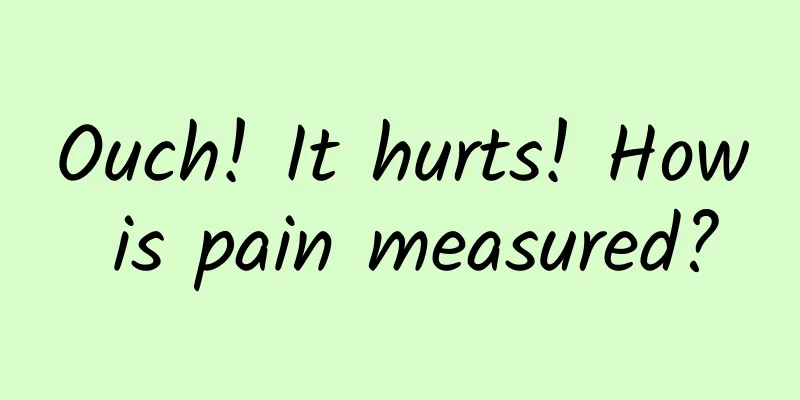Can you believe that a house can be built with bacteria and fungi?

|
Produced by: Science Popularization China Author: Denovo Team Producer: China Science Expo Biomanufacturing might remind you of biopharmaceuticals or advanced biofuels. However, the field's applications extend far beyond these areas. From ethanol to biodegradable plastics such as polylactic acid, biomanufacturing is quietly changing our daily lives. Recently, this technology has also entered a seemingly unlikely field: home construction . At present, the main applications of biomanufacturing in the construction field include but are not limited to "self-repairing concrete", "biocement" and "mycelium materials". These innovative applications not only demonstrate the great potential of biomanufacturing in construction engineering, but also open up a new dimension of research and application for us. Laying cement in construction (Photo source: veer photo gallery) Bacillus for repairing wall cracks Concrete is a building material made of cement, sand, gravel and water in specific proportions. It is widely used in civil engineering projects due to its low cost, high compressive strength and excellent durability. Although concrete has a long lifespan comparable to natural stone under ideal conditions, its actual lifespan is often greatly reduced due to long-term exposure to wind, sun, rain, and freeze-thaw cycles caused by the alternation of winter and summer seasons. This not only increases the maintenance frequency of buildings, bridges and tunnels, but also increases maintenance costs. House cracks (Photo credit: Photo taken by the author) To solve this durability problem, scientists have developed concrete with self-healing capabilities. Inspired by the self-healing mechanism of human bone cells through calcification, Dutch microbiologist Hendrik Jonkers developed a material called "bio-concrete", whose outstanding feature is its self-healing ability. Bio-concrete contains a microorganism called Bacillus, which can survive in a lime environment and can survive in the form of spores for nearly two hundred years in the absence of food and oxygen. When this bacillus is mixed with calcium lactate to produce concrete, once cracks appear in the concrete, the infiltrating rainwater awakens the dormant spores. These revived spores begin to consume the calcium lactate and release calcium ions, which react with carbonate ions in the water to form calcium carbonate (limestone), thereby automatically repairing the cracks. After the repair is completed, because rainwater no longer penetrates and the growth environment is destroyed, the spores will re-enter a dormant state and wait for future damage. Studies have shown that this bioconcrete can repair cracks of about 0.5 mm in width in about three weeks, greatly extending the service life of the building. This self-healing concrete could not only save expensive maintenance costs but also improve the safety of buildings. However, due to the relatively high cost of this technology, it has not yet been widely used in large-scale construction projects. Bacillus and self-healing concrete (Image source: Reference [1]) "Biocement" with diatoms The main ingredient of concrete mentioned above is cement, which is produced and used in large quantities worldwide. However, this industry is also a major "contributor" to global carbon dioxide emissions. In this context, biomanufacturing technology has brought innovative solutions to the cement industry. Diatoms are single-celled autotrophic microorganisms known for their rapid reproduction in water bodies. The cell walls of diatoms contain porous silica, a substance that can effectively enhance the mechanical strength of materials. By incorporating diatoms into the cement manufacturing process, forming so-called "biocement", the mechanical and rheological properties of cement can be improved, thereby reducing the amount of cement required. This not only helps to reduce carbon emissions, but also increases the biological capture capacity of carbon. However, this technology currently also faces challenges such as cost-effectiveness. Diatoms (Image source: Wikipedia) In addition, diatoms have other application values. For example, in the manufacture of diatom mud, diatom mud is composed of sediments of diatoms and other plankton that have undergone billions of years of evolution. It is a new type of environmentally friendly material . This material can be used to replace latex paint and wallpaper, and is an ideal choice for wall decoration in villas, hotels, apartments and hospitals. Diatom mud not only has rich texture and soft color, but also has strong physical adsorption capacity. It can effectively absorb harmful substances in indoor air, such as free formaldehyde, benzene, ammonia, etc., and eliminate odors caused by smoking and garbage, thereby purifying indoor air. Can mushroom mycelium be used to build buildings? Although mushrooms are often considered a "vegetable," they are not actually plants but rather fungal microorganisms . What's more noteworthy is that what we eat daily is only the fruiting body of mushrooms. In fact, underneath the mushroom (or inside rotting wood) there is a network of hyphae composed of countless cells, also known as mycelium. Mycelium (Photo source: veer photo gallery) These hyphae are the main structural units used by fungi to absorb, transport and store nutrients, and their cell walls are mainly composed of chitin, glucan and protein. Chitin has a tensile strength comparable to that of carbon fiber, and has excellent thermal stability and flame retardancy. These characteristics have made mycelium the focus of material scientists and have begun to be used in the development and manufacture of building materials. In New York, there is a temporary outdoor biodegradable pavilion called "Hy-Fi". This pavilion is built with mycelium bricks, which take only 5 days to grow. After that, these bricks are stacked into three intertwined cylindrical structures, and their unique shape is very eye-catching. Mycelium materials used to build outdoor pavilions (Image source: Reference [6]) Conclusion Biomanufacturing technology has brought disruptive innovations to the construction industry, from "self-repairing concrete" that extends the service life of buildings, to "biocement" that reduces carbon emissions, to fast and efficient "mycelium materials". I believe that in the near future, these biomanufacturing technologies will be more widely used in house construction, adding more possibilities and fun to our living environment. References: [1]Henk M. Jonkers. Self healing concrete: a biological approach. Springer Series in Materials Science, 2007, 100, 195-204. [2] Yu Jian, Bao Yafang. Modification effect of diatomite as high performance concrete admixture. Building Gypsum and Cementitious Materials, 2003, 12, 11-12. [3] Guo Binda, Fang Congcong. Analysis of environmentally friendly decorative material diatom mud. Jiangxi Building Materials, 2017(19):286-286. [4] Wang Jing, Ji Zhijiang, Zhang Jingjun, et al. Research, evaluation and application technology of diatom mud decorative wall materials. Construction Science and Technology, 2018, 366, 30-33. [5]Ekaraj Paudel, Remko M. Boom, Els van Haaren, et al. Effects of cellular structure and cell wall components on water holding capacity of mushrooms. Journal of Food Engineering, 2016, 187: 106-113. [6]Avinash Rajagopal. Behind the living's "100% Organic" pavilion for MoMA PS1Metropolis, 2014-2-10. |
<<: Is it self-deception or is it your brain deceiving you? The truth about lies
Recommend
PPT animation production tutorial including animation plug-in materials
PPT animation production tutorial including anima...
Do you need to remove the foam from stewing meat and boiling soup? Note that it is best to skim off these two foams.
This article was reviewed by Liu Shaowei, food sa...
The reason why the "face plate" has become bigger has been found! (It's not because of obesity)
In daily life, have you ever felt snapping or dis...
10 strategies to reduce user churn rate in APP!
Many companies have not developed specific plans ...
Xiaohongshu promotion and traffic generation methods
Everyone is familiar with Xiaohongshu. It has dev...
The competitors that keep Apple awake at night
Apple provides a wide range of products and servi...
Alipay is in big trouble! Huabei and Jiebei will be disconnected, and Yu'ebao will also be affected
[[396720]] Since Ant Group's IPO was suspende...
Nangong Guoer "Pinduoduo Product Planning and Explosive Product Creation"
This Taobao series of courses explains in all asp...
Planning and creating popular notes on Xiaohongshu!
As one of the social platforms, Xiaohongshu has n...
5 common methods to improve user retention!
In the current context where it is difficult and ...
Android Control WebView
How to open a website in an Android app? Google h...
Go to Deyang and see the hardcore Sichuan
I hope the high temperature and power shortage wi...
2023 Enterprise Digital Transformation Capability Survey
The digital transformation of an enterprise is a ...
Why did dinosaurs get so big? Is there an upper limit?
Editor’s Note: "Why were dinosaurs so big?&q...
How to operate and promote APP? Share these 5 points!
After the APP product is launched, what do APP op...









